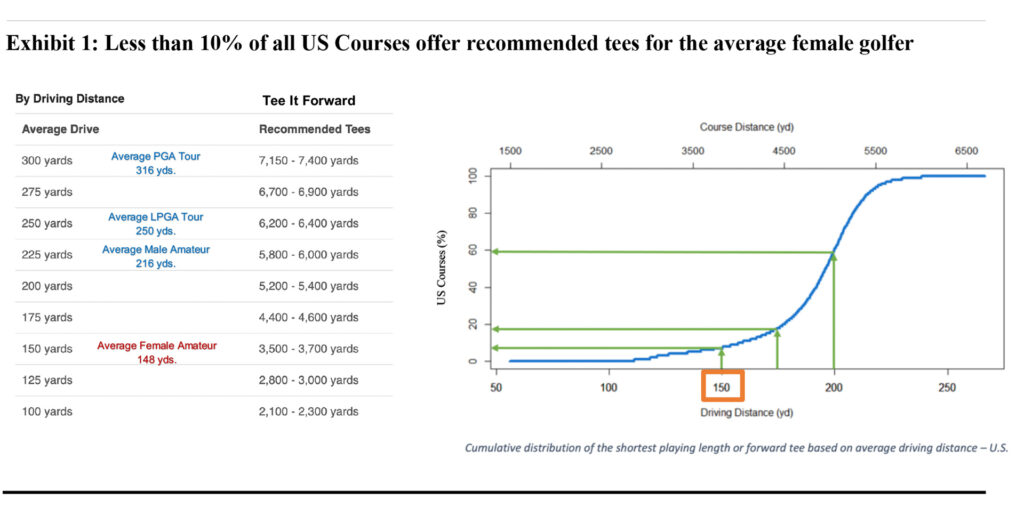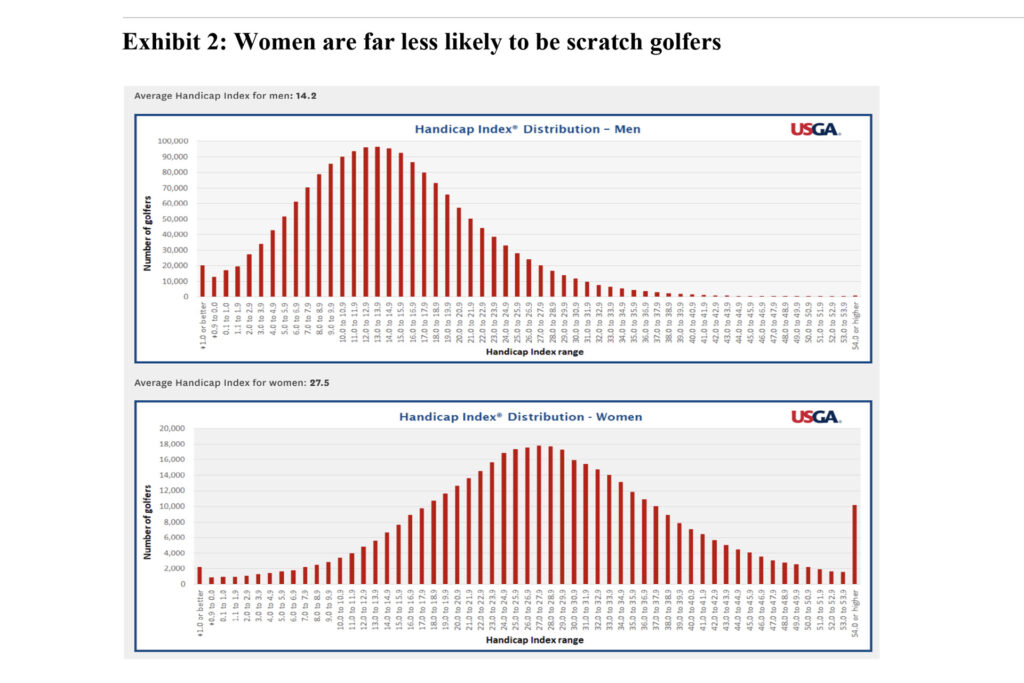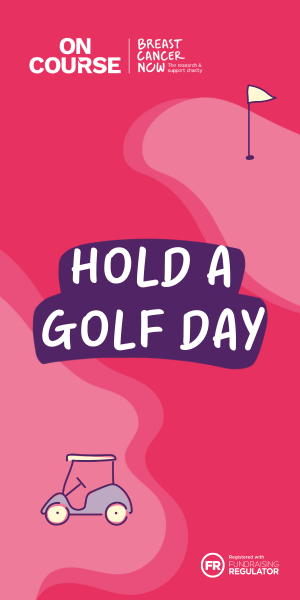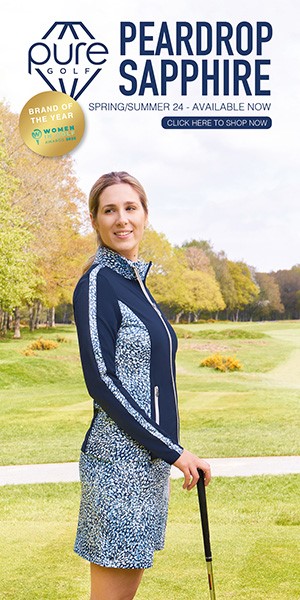Addressing the Distance Bias in Golf - golfer Sally Potts takes a comprehensive look at the impact tee placement is having on women in golf.
The following report has been complied and written by Sally Potts:
I took up golf almost ten years ago, at the age of 60. Although my ability to drive the ball is in line with industry gender/age data, according to USGA/PGA guidelines, most U.S. courses are way too long for me. In fact, most U.S. courses are too long for most women, especially for senior women. I believe this distance bias has a direct impact on the golfing experience.
I wrote this report to convince the course owner and pro at our local club to start offering up shorter tees.
For Most Women, Teeing It Forward Isn’t a Choice
It’s been 10 years since the USGA and PGA launched their “Tee it Forward” campaign, promoting the concept that "the playing field is leveled by giving golfers the opportunity to play from distances that are properly aligned with their abilities.”
Among players who teed off from a recommended shorter distance, most found it makes the game more fun, improves the pace of play, and ultimately makes you a better player.
Still, not everyone followed the “Tee it Forward” advice. In 2020, 73% of players surveyed by the NGF (National Golf Foundation) recalled the “Tee it Forward” campaign, but only 30% said they tried it. As many as 33% of all players still play from tees that are too long for them.
Why haven’t more players made the move forward?
According to NGF’s Joe Beditz, “National advertising helps create needed awareness, but is insufficient to overcome the inertia of ego, convenience and conformity, which golfers – virtually all of them – willingly admit stand in the way.” But for men, teeing it forward is almost always a choice. What gets lost in the conversation is the absence of tee boxes for most women. Even though women make up 24% of all players, most courses don’t have tee boxes to accommodate their average driving distance, let alone forward options for shorter hitters.
On average, female amateurs drive the ball 148 yards. Under “Tee It Forward” guidelines, they should play a 3,500-3,700-yard course length. But only 8% of US courses provide rated tees for a 150-yard drive. At the other end of the spectrum, for 40% of all courses, their shortest course length accommodates a minimum 200-yard drive. Moreover, consider also that driving distances decline with age for all players. Arccos tracking data shows that women lose distance more rapidly than men do. A 50-54-year-old female player with a 20-25 handicap averages a driving distance of about 135 yards; for a 60–64-year-old, that figure drops to 115 yards.
How can these women move up when their recommended tees don’t exist on most courses?

What’s so bad about playing from a longer tee box?
The playing field isn’t level if it forces most women to settle for higher scores. Back in 2011, Arthur D. Little and Jann E. Leeming found that most women golfers were playing courses which were more than 1,000 yards too long for them. “How fair is a 5,600-yard course for the average woman? What would you think if we told you that a 5,600-yard course would be equivalent to an 8,400-yard course for the average man?”8
Female players often stand on the tee box of a par 3, driver in hand, with zero chance to reach the green. On longer par 4s or par 5s, they’ll often need to hit a fairway wood 3 or 4 times to reach the green -frequently leading to, at best, a bogey. Sometimes it’s just about pure distance to the green but often it’s also about forced layups or penalties caused by unsurmountable cross hazards. Both issues contribute to higher scores and fewer pars, birdies and eagles. For women who are new to the game, the situation can even be embarrassing and humiliating.
The lack of appropriate tee boxes for women also creates a development problem. Besides the psychological challenges of playing a course that’s too long for you, there’s the reality of rarely using your irons. The bottom line, you can never fully develop the strategies and accuracy of a well-rounded player if you’re using mostly woods and hybrids to reach the green. It turns out that women are far less likely than men to attain a scratch handicap rating. Data from the USGA paints this picture in terms of both distribution and skew. Cumulative data show that 1.85% of men are scratch golfers (0 or better), while just 0.69% of women golfers reach this level.

Why are women’s handicaps so much higher than men? Most women cannot reach the green in regulation, they approach greens with woods or hybrids - which are less accurate than irons or wedges, and as a segment, they include more beginners because women give up on golf with greater frequency.
Don’t we already have separate course and slope ratings for women on most courses?
Yes, we do. And these numbers are intended to level the playing field when it comes to handicap calculations. But you must also consider how the USGA measures the difficulty of individual courses. Officials evaluate each hole from the perspective of a scratch golfer (one who can shoot par on any rated course) and then they compare the findings to a hypothetical bogey golfer (one who averages a bogey on every hole). The results get converted into ratings for each tee box: a course rating expresses the difficulty of a course for a scratch player, a slope rating captures the increased ease/difficulty for bogey golfers. Officials use these models to evaluate each course:

Why does the USGA define the female bogey golfer as a 24 handicap? If a woman is averaging a bogey on every hole, shouldn’t she have a lower handicap? How does the model square with other handicap/distance data? In the 2020 Distance Insights report, female players with a 24 handicap fall into a range that averages just 141.5 yards. Why is the reference set at 150 yards?

Does the bogey model simply allow for the fact that many U.S. women play courses which are too long for them? Instead of extra handicap points, shouldn’t we be adding shorter tee boxes?
Why is the lack of tee boxes a critical issue for the industry?
The distance problem is not limited to amateurs. It’s holding back the professionals too. An average 7,300-yard course on the PGA Tour would play the equivalent of roughly 6,000 yards on the LPGA. But the average course length on the LPGA is about 6,400 yards. Major championships often push out to 6,600 to 6,800 yards. The result is fewer low scores, fewer eagles and birdies, more bogeys, more layups, and less excitement overall, leading one analyst to conclude that, “There is no more cost-effective way for the LPGA to immediately increase the entertainment value of its tour than to set up more courses that are conducive to low scoring.”
The negative impact of distance on the golf experience is one of the key reasons why women abandon the game. It’s not that the industry is unaware of the issue. The PGA’s 2015 report, Setting Up Golf Courses for Success: A Critical Factor in Attracting More Women to Golf, gave courses clear guidance on how to address the distance challenges for women:
“The way many golf courses have been designed and built is a critical contributing factor in the low percentage of women’s participation in the sport. Most golf courses are, on average, excessively long and place women at a disadvantage to their male counterparts…unless this design flaw is addressed and corrected, many women will never be enthusiastic long-term customers and golf facilities will not capture the full potential of the women’s market.”
Fast forward five years. Have we done much to address the issue? As mentioned earlier, just 8% of today’s U.S. courses provide the recommended tee box for the average female golfer’s drive. Concurrently, net female players grew by less than one percent since 2014. Adding shorter tee boxes and rethinking cross hazards is a straightforward solution to a critical industry problem. As Rory McIlroy said, “We have to make the game as easy and approachable as possible for the majority of golfers…It's [about] getting more people engaged in golf.”
Ultimately, it’s about the future growth of the game. Women make up the fastest growth segment in the industry but most of that growth is off-course at driving ranges, indoor simulators and golf entertainment venues. Women make up a disproportionate 36% of beginner golfers in the United States, but only 24% of today’s on-course players.
In particular, more young girls are taking up golf. Since 2000, females playing at the junior level grew from 15% to 34%. Yes, many junior girls have the LPGA pro tour in their sights. But realistically most will simply decide whether to stick with the game as a lifelong hobby. Unless the industry does more to improve the game for women, it’s unlikely to retain them.
Why is now the perfect time to solve this issue?
Golf’s downward spiral since the early 2000s is well documented. Between 2003 and 2018, the game lost an estimated 6.8 million players and 1,200 courses closed. The decline in demand was rooted in rising costs to play (equipment, tee times, memberships, etc.), difficulty in courses, and incompatibility with today’s lifestyles. Yet, the Covid pandemic gave the game a huge uplift.
Despite the March/April closures during the 2020 economic shut down - and the loss of many
players who were unable to play during Covid - the golf industry saw its largest increase in
players in 17 years. NGF stats for 2020 (vs. 2019) show that:
● 14% more rounds were played
● 10% more equipment was sold
● 500,000 more people played golf
● 10% more non-players said they were interested in playing golf.20
We could be at an inflection point for transforming the state of the industry for women. We need more courses to invest in the design, construction and maintenance of shorter tee boxes. We need the golf industry associations to play an important role in driving this change. It’s about revenue growth, it’s about inclusivity, it’s about fairness, it’s about driving the future of the game.
About the author - Sally Potts and her husband Doug reside in the US. During summer and fall, their home club is Trout Lake Golf Club in northern Wisconsin. The rest of the year, they reside in Dallas, Texas and play at Tenison Park. Before retiring she spent 23 years in professional services, researching entertainment markets and industries for PwC.
Tell us your thoughts on this topic by sending an email or joining the discussion online.















